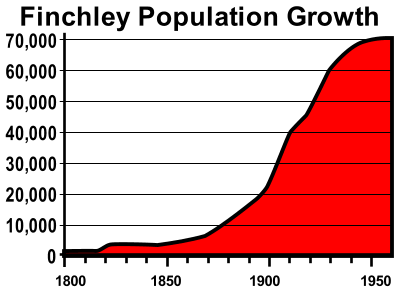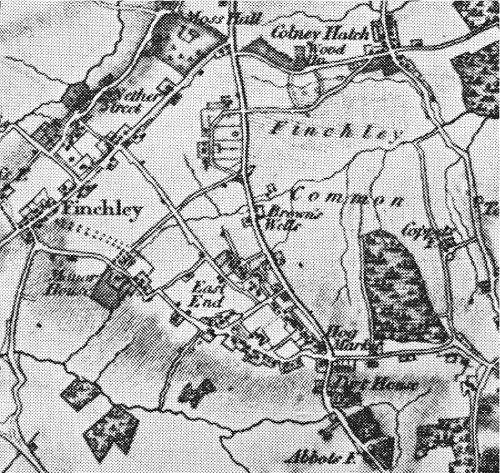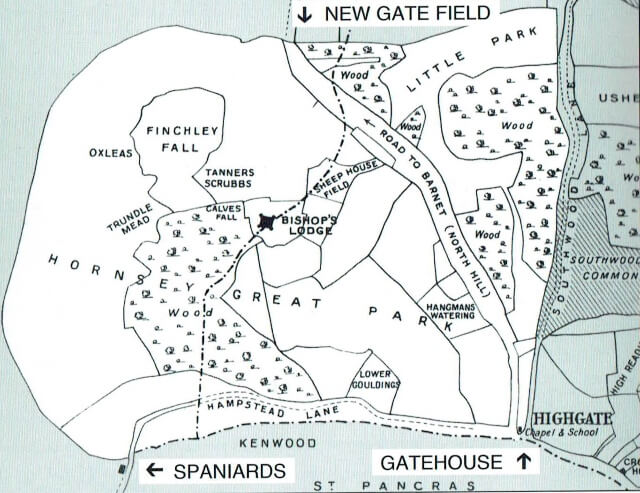Article by Tony Roberts, first published in The Archer, November 1997.
For centuries, Finchley remained an unremarkable rural community whose dependence on wood based occupations gradually gave way to pasturing, hay making and servicing the basic needs of London. Population never rose much above 250 households at the best of times. Then, around 1820, several factors coincided which were to change the face of East Finchley beyond recognition. The enclosure of the common, the growth and dominance of London, and improvements in transport each contributed and will be explored in more detail in future issues of the Archer. A hint of the change is just evident on the 1821 Ordnance Survey map which shows the new development of land around present day crossroads.
London’s growth statistics were phenomenal and fuelled by an influx of newcomers. In fact, for most of its history, London’s deaths exceeded its birth rate! Between 1500 and 1650 population increased tenfold, overflowing boundaries and joining Westminster. Speculative development between landowner and builder, the builder taking the risk, enabled a house building boom which spread across the Euston Road around 1800, reaching Highgate within 50 years and East Finchley soon after.

The expansion was assisted by the development of the horse drawn omnibus and the railway (1830’s), horse tram (1870’s), electric tram (1890’s) and underground (1900’s).The 1860 Cheap Trains Act introduced the cheap workman’s fare at times outside the normal middle class day and led to the speculative development of lower cost housing at about the time that East Finchley became ripe for development. The more affluent classes were always able to travel that bit faster and further, arriving first, but as areas became over developed, they moved on, their properties subsequently torn down and replaced by individually cheaper but much higher density housing. Nowhere is this more evident than in East Finchley
Fuelling the influx to the cities and feeding London’s expansion was the process of Enclosure, whereby multi-occupied common land was “privatised”, that is to say put into the private ownership of those able to pay to enclose the land, the remaining interests being paid off. This was in full swing between 1760 and 1820. Finchley Common was enclosed in 1814, Hornsey in 1815, providing land for development. Many poorer people would have lost their livelihoods, no doubt bringing much misery to East Finchley.
Reproduced by kind permission East Finchley Newspapers CIC



